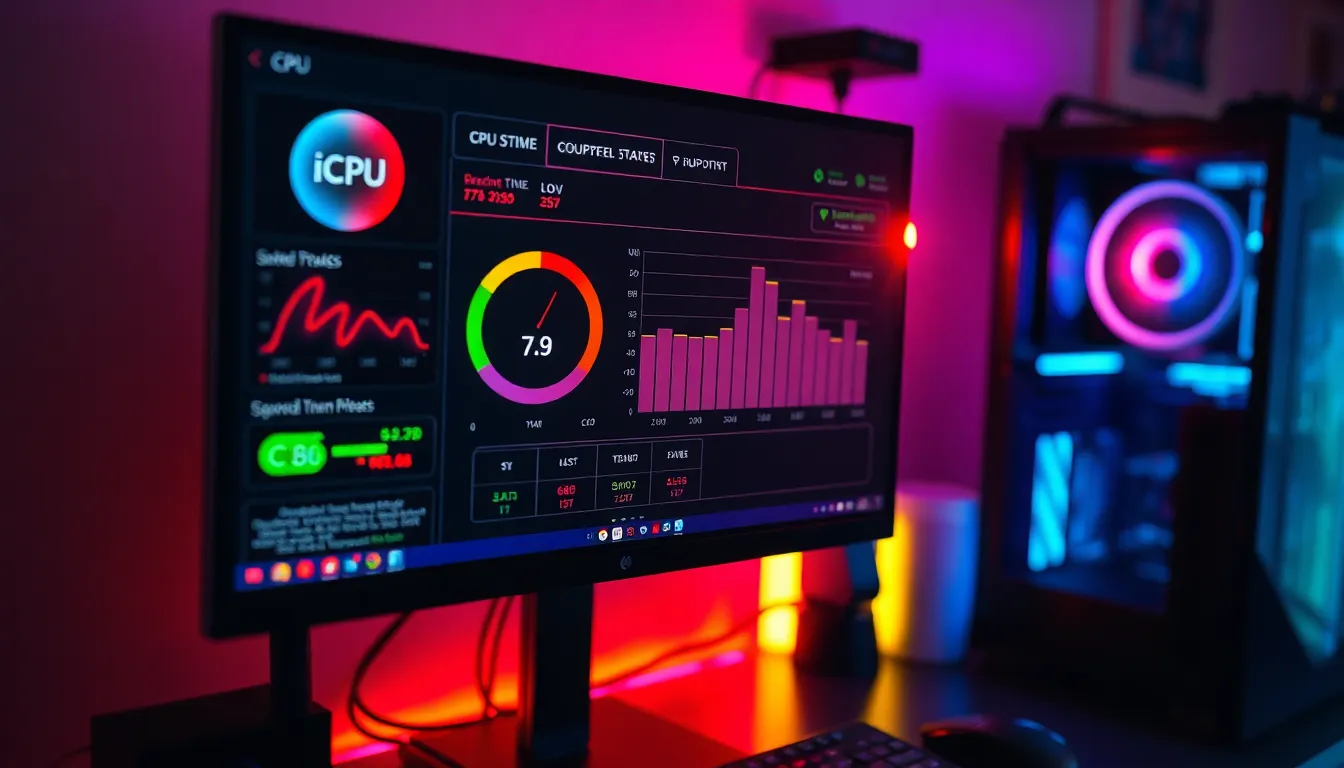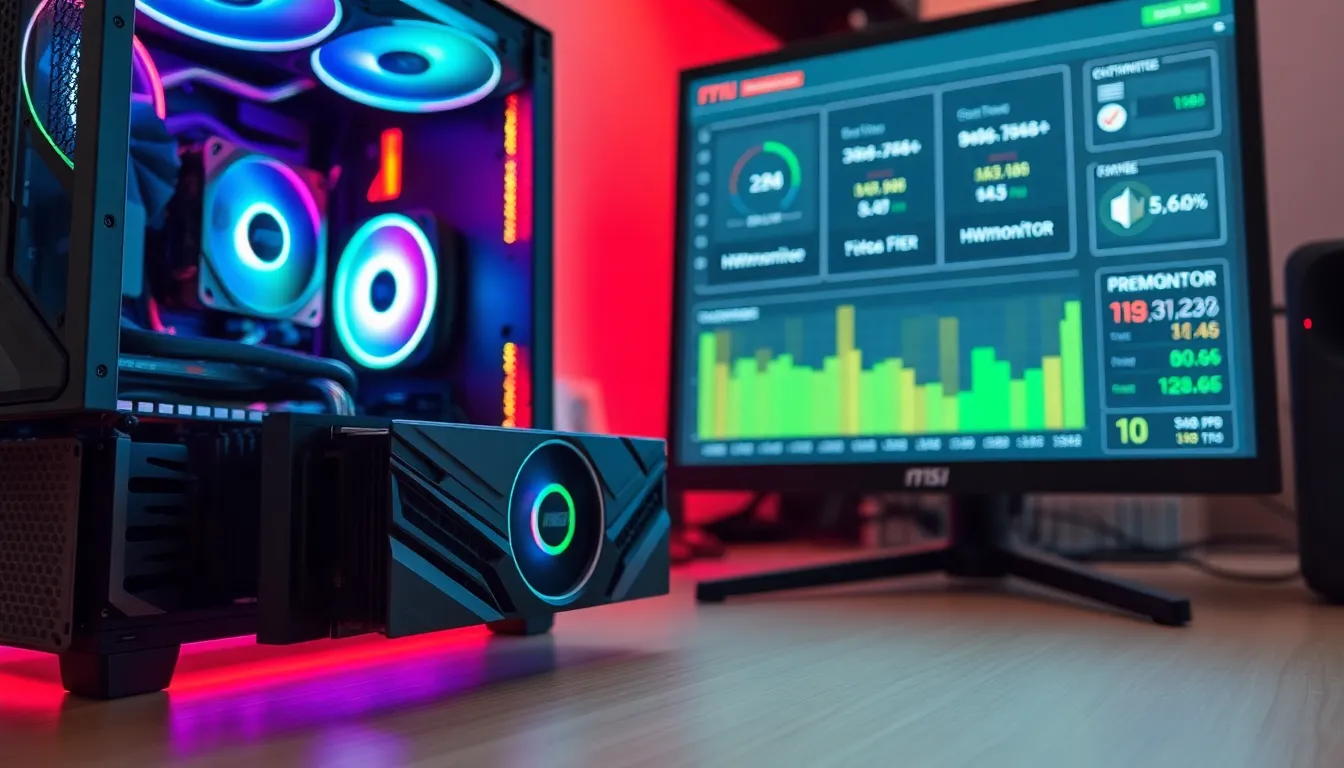In the fast-paced world of gaming and computing, nothing’s more frustrating than a sluggish system. Imagine your powerful graphics card waiting impatiently for the CPU to catch up, like a sports car stuck behind a slow-moving tractor. That’s a CPU bottleneck, and it can turn your high-octane experience into a snooze-fest.
Table of Contents
ToggleUnderstanding CPU Bottlenecks
CPU bottlenecks occur when a computer’s CPU limits the performance of other components. This limitation often impacts gaming, multitasking, and overall processing efficiency.
What Is a CPU Bottleneck?
A CPU bottleneck refers to a situation where the central processing unit slows down the performance of a system. Performance becomes restricted when the CPU cannot keep up with data demands from the graphics card or memory. This bottleneck affects frame rates in gaming and processing speeds in applications. Identifying a CPU bottleneck is critical for optimal performance, especially in high-demand scenarios.
Common Causes of CPU Bottlenecks
Several factors contribute to CPU bottlenecks. Insufficient CPU cores or outdated architecture often hinders performance in modern applications. Running resource-intensive software without adequate CPU resources can lead to performance lags. Heavy background processes also compete for CPU time, causing slowdowns. Additionally, thermal throttling due to overheating can impair CPU performance by reducing processing speeds to cool down. Each of these causes requires careful monitoring to maintain system efficiency.
Methods for CPU Bottleneck Detection

Detecting CPU bottlenecks is essential for maintaining optimal performance in gaming and computing. Several methods exist to identify potential issues effectively.
Monitoring Tools and Software
Utilizing monitoring tools streamlines CPU performance assessment. Software like MSI Afterburner provides real-time statistics for CPU usage, temperature, and clock speeds. Another option, HWMonitor, tracks system health with detailed readings on CPU temperatures and voltages. Performance metrics captured during gameplay or heavy processing tasks highlight whether the CPU reaches its limits. Users can analyze this data to determine if a bottleneck exists, making adjustments as necessary.
Identifying Performance Symptoms
Recognizing performance symptoms facilitates quick detection of CPU bottlenecks. Stuttering and frame drops often signal that the CPU is struggling to keep pace with the GPU. Users may notice longer loading times for applications, indicating the CPU cannot efficiently handle requests. High CPU usage percentages under normal loads also point to potential issues. Addressing these symptoms promptly helps in maintaining smoother performance across various applications and gaming experiences.
Analyzing System Performance
Analyzing system performance involves identifying areas where the CPU might be limiting other components. Keeping track of metrics helps ensure smooth operation and optimal gaming experiences.
Benchmarking and Stress Testing
Benchmarking and stress testing assess system performance effectively. These processes involve running specific applications designed to gauge CPU capabilities under heavy loads. Running synthetic benchmarks like Cinebench or Prime95 can reveal performance thresholds. Comparing performance results against similar systems uncovers potential bottlenecks. Stress testing keeps CPU temperatures in check during prolonged loads to prevent thermal throttling. Monitoring tools, such as CPU-Z and HWMonitor, provide real-time feedback on processing performance. Evaluating these metrics aids in determining whether the CPU limits overall system performance.
Interpreting CPU Usage Data
Interpreting CPU usage data proves crucial for identifying bottlenecks. High CPU usage percentages, particularly during gaming or resource-intensive tasks, indicate potential limitations. Tools like Task Manager and MSI Afterburner display CPU usage clearly. It’s essential to analyze usage patterns during peak performance to spot abnormalities. Data from these tools highlights whether the CPU becomes a performance bottleneck. Investigating unusual spikes in CPU usage signals resource allocation issues. Understanding this data facilitates informed decisions about system upgrades or optimizations to enhance performance.
Practical Solutions for Mitigating Bottlenecks
Mitigating CPU bottlenecks involves several practical solutions that enhance system performance.
Upgrading Hardware
Upgrading hardware represents a direct method to alleviate CPU bottlenecks. Users should consider increasing the number of CPU cores, as more cores enable better multitasking capabilities. Opting for a newer CPU architecture can significantly improve processing speeds for current applications. Installing a more powerful cooling solution often helps prevent thermal throttling, maintaining optimal performance during heavy workloads. Additionally, ensuring compatibility with the existing motherboard is crucial before making upgrades. Upgrading RAM can also improve overall system performance, especially when running resource-intensive software.
Optimizing Software and Workloads
Optimizing software settings contributes significantly to reducing CPU bottlenecks. Disabling unnecessary background processes helps free up CPU resources for more critical tasks. Adjusting in-game settings to prioritize performance over visual quality often results in smoother gameplay. Task scheduling can also maximize CPU efficiency, focusing on high-priority applications. Utilizing performance monitoring tools aids in identifying and addressing resource-intensive programs. Regularly updating software ensures compatibility with the latest hardware advancements, enhancing overall system performance. Managing workloads efficiently ultimately improves user experience during various computing tasks.
Detecting and addressing CPU bottlenecks is essential for maximizing performance in gaming and computing. By utilizing monitoring tools and understanding performance symptoms, users can identify potential issues early. Regular benchmarking and stress testing further illuminate the CPU’s capabilities and limitations.
Implementing hardware upgrades and optimizing software settings can significantly reduce bottlenecks. A proactive approach ensures that the CPU can keep pace with other components, enhancing the overall user experience. Staying informed about system performance and making necessary adjustments will lead to smoother gameplay and improved processing efficiency.








